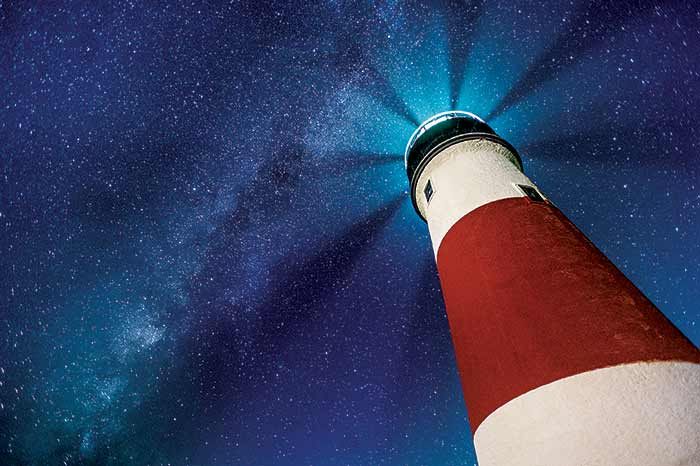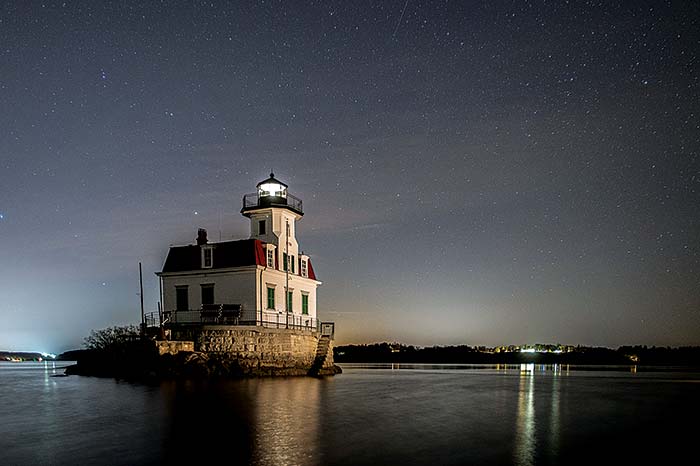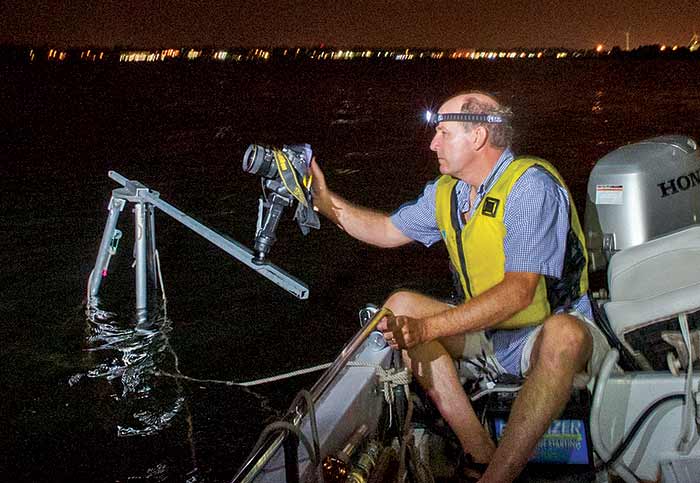Advertisement
Cameraman David Zapatka turns his lens to the sky to capture brilliant star-lit images of lighthouses.

Sankaty Head Light with Milky Way on Nantucket Island in Massachusetts. (Photo: David Zapatka)
David Zapatka is a TV cameraman by profession. You've probably seen news and sports events unfold through his camera's eye on all the major networks over his 35-year career.
"I was the 13-year-old kid with a still camera who just captured what was in front of me," says Zapatka, now 58. The camera gave him a career and livelihood. He married, started a family, and along the way fell in love with the boating life. Being born and raised in Rhode Island, "The Ocean State," didn't hurt.
On one particular summer evening, while he was simply following his curiosity, Zapatka fell into a new artistic venture he didn't see coming: "Four years ago, while spending time on our 28-foot Sea Ray on Rhode Island's Narragansett Bay with my wife, Lisa, I wondered what a local lighthouse might look like under the stars at night," the BoatUS member explains. "At that time I hadn't ventured into the fledging genre of nighttime still photography, but I had the wonderment." Beyond his career capturing imagery in challenging conditions, Zapatka teaches lighting techniques at the Rhode Island School of Design, so he knows about lighting, composition, and camera exposure.
Uninhabited Dutch Island, at the entrance to Narragansett Bay, has a nearly 200-year-old beacon to mark the west passage of the bay. He carefully motored over to the island shore that night and, while shining a flashlight on the beacon, took some long-exposure images with his digital camera. The result was life-altering.

The Esopus Meadows Lighthouse on the Hudson River near Port Ewen, New York. (Photo: David Zapatka)
"I was out there screaming like a little kid," he says. "I was so excited to see this image that I'd only seen in my head."
The quest had begun, and his craft and technique would be honed over the ensuing years while capturing 130 (and counting) lighthouses under new-moon, cloudless, star-filled skies across New England and New York, and as far south as Cape May, New Jersey.
He recently drove to Lubec, Maine, to capture West Quoddy Head Light, the easternmost lighthouse on the continental U.S. "Seven hours of driving for one shot," he says. "I also drove five hours to Burlington, Vermont, to shoot two lighthouses, and one February, I shot Point Judith Light in Rhode Island in 8 degrees and a 20-mph wind."
He concedes being a slave to the weather forecast, "If there are no stars, I won't shoot." His results are pretty eye-popping, with the warm glow of the beacon light wrapped in a blanket of stars dominating his images. Several include the Milky Way streaked across like brushed paint in the background. If you've seen the lighthouses up close, Zapatka gives you a fresh new perspective to view them.
"The work can be tricky and requires a lot of research in not only reading navigation, tide charts, and sea conditions, but also gaining proper permission from private owners, cities or towns, or nonprofit foundations to be on the property late at night," he says.

Zapatka has customized his photography equipment to fit his needs.
He owns his 28-foot Sea Ray with 7-foot inflatable and sometimes borrows his son's 15-foot Boston Whaler. "I couldn't do this project without being a boater with access to the water," he says. He shoots from shore when possible, but that's not always feasible, so he has a custom-made 20-foot tripod that he sets on the seabed in shallow water. He typically stabilizes his boat with two or three anchors when shooting." You need the camera to be still 20 to 25 seconds to get the stars," he says.
His passion, and attention to detail, is now paying dividends. His lighthouse photography resulted in a solo exhibit and now a book deal. Stars and Lights: The Darkest of Dark Nights was published in late 2017. The 200-page book showcases 130 Northeastern U.S. lighthouses in a way seldom seen, but at the time when they do most of their work — at night.
"Every one of these lighthouses has a story, so in the book there is a little history, plus what I went through to get the shot — the planning, the safety precautions. There are plenty of books out there about the history of the lighthouses. I'm not a historian. I'm a photographer."
Published by Vertel Publishing of Mt. Pleasant, South Carolina, the book is $39.99 (soft cover) and $49.99 (hard cover) and can be purchased through Zapatka's website where his gallery of work can also be viewed.
